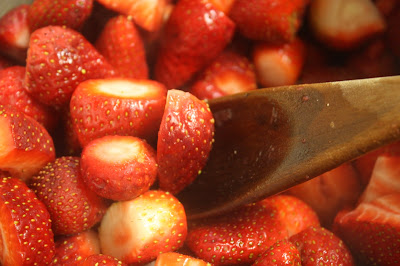There have been murmurs of a clothes swap for a while now. But while Gav and I were away was when the idea of something a bit more than just a clothes swap dawned on me. With the war time mantra of Make Do and Mend rattling around in my head I came up with Swap, Mend and Re-use. While the war time mantra was born out of a necessity to maximise scarce resources, this new mantra has been born more out of a desire to be resourceful with what we already have, without the usual exchange of money and with the underlying theme of re-use. Contrary to 1940's UK, here in Australia we have access to plenty of cheap (and not so cheap) clothing, most likely to have been made by those who have so little to begin with and are receiving an inadequate amount for the work they are doing to put layers of clothes on our backs. Add to that the environmental impact of our clothing habits and I'm left a more than a bit embarassed to admit that I bought a pair of shoes for $4.80 from Target the other day. My only consolation is that the big company didn't get the highest price at point of sale from me. Not much of a consolation - these are complex issues!
But anyway, I don't want to get too heavy and not highlight the fun, because the day WAS fun! And I am really thankful to all those who came to share resources, skills, friendship, time and tasty treats on a beautiful Saturday morning.
The day was planned in a relatively short time frame. Emails and facebook stuff sorted, a few old sheets, a hot kettle, a few sewing machines and a couple of skilled folk ready to share their knowledge was all that it took (thanks mum, sis and others!). I was so chuffed to see all those that came along and made the day as excellent as it was. Here's some snaps of what went on:
But anyway, I don't want to get too heavy and not highlight the fun, because the day WAS fun! And I am really thankful to all those who came to share resources, skills, friendship, time and tasty treats on a beautiful Saturday morning.
The day was planned in a relatively short time frame. Emails and facebook stuff sorted, a few old sheets, a hot kettle, a few sewing machines and a couple of skilled folk ready to share their knowledge was all that it took (thanks mum, sis and others!). I was so chuffed to see all those that came along and made the day as excellent as it was. Here's some snaps of what went on:

Items of clothing happily swapped or lined up for some re-fashioning

Clever hands helping on the sewing machine

A favourite shirt being salvaged and sewn on to another

A shirt being transformed in to a skirt

A little cutie enjoying the piles of clothes that were begging to be hidden under
Thanks to all those that came along!
I heard a few people talking about their fabric collections and desire to actually make things from said collections (Me included! My op shopped piles of fabric need to stop growing and turn in to things!). So I was thinking I'd be keen to have a Sew, Mend and Re-Use day sometime in the new year. The lead up could involve sharing patterns, online tutorials and other inspiration...
And yes, I'm still keen to make undies out of old shirts. That might be a tutorial of it's very own!
~
Melania









































